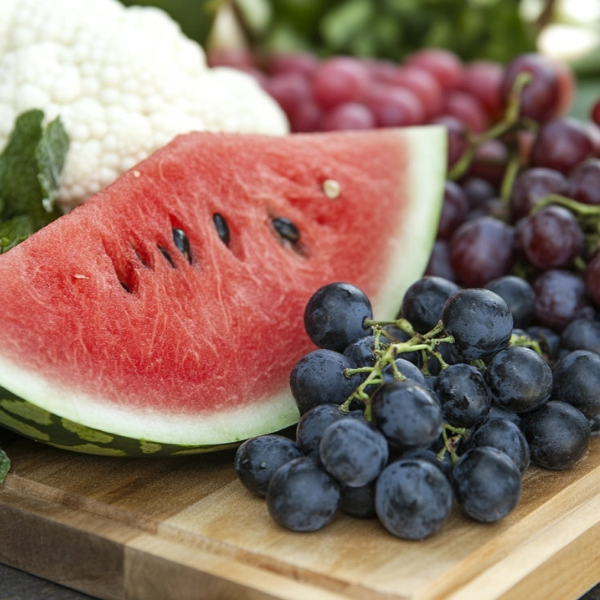Discover the 4 main types of foods that cause bloating, from oligosaccharides to polyols. Learn how to manage digestive discomfort naturally!
Introduction
Bloating can leave you feeling uncomfortable and sluggish, especially when certain foods trigger digestive distress. From fruits to dairy and even vegetables, some foods are notorious for causing bloating. Understanding the different types of foods that may lead to bloating is key to managing digestive discomfort. Let’s dive into the 4 main categories of foods that can cause bloating and how you can address them.
4 Foods That Can Cause Bloating
1. Oligosaccharides
Oligosaccharides are a type of carbohydrate that includes fructans and galacto-oligosaccharides (GOS). These compounds are found in a variety of foods but can be difficult for some people to digest, leading to gas and bloating. Foods high in oligosaccharides include:
- Vegetables: Artichokes, asparagus, beets, broccoli, Brussels sprouts, cabbage, fennel, garlic, leek, okra, onion, peas, shallots.
- Grains: Rye and wheat products.
- Legumes: Baked beans, chickpeas, lentils, red kidney beans.
- Fruits: Apples, persimmons, watermelon, peaches.
These foods are rich in fiber, but the body may struggle to break down oligosaccharides, causing excess gas production.
2. Disaccharides
Disaccharides are sugars made up of two molecules. Lactose, the most common disaccharide, is found in dairy products. If your body lacks the enzyme lactase, which breaks down lactose, you may experience bloating, gas, and other digestive discomforts. Common foods high in disaccharides include:
- Dairy: Milk, ice cream, soft cheeses, some hard cheeses, coffee creamers, processed baked goods, processed meats.
For individuals who are lactose intolerant, looking for ingredients like milk, whey, lactose, curds, and milk by-products can help avoid these digestive triggers.
3. Monosaccharides
Monosaccharides, such as fructose, are simple sugars naturally found in many fruits. While they can be easily digested by most, some people may struggle to process fructose, leading to bloating. Common fructose-rich foods include:
- Fruits: Apples, peaches, mangoes, pears, sugar snap peas, canned fruit in natural juice, watermelon.
- Other: Honey, high fructose corn syrup.
Those with fructose intolerance may experience bloating and discomfort after consuming these foods.
4. Polyols
Polyols, also known as sugar alcohols, are naturally occurring in some fruits and vegetables and are commonly used as sweeteners in sugar-free products. For individuals sensitive to them, polyols can lead to bloating and digestive issues. Foods high in polyols include:
- Fruits: Apples, apricots, avocados, cherries, lychees, nectarines, peaches, pears, plums, prunes, watermelon.
- Vegetables: Cauliflower, mushrooms, snow peas.
- Sweeteners: Isomalt, maltitol, mannitol, sorbitol, xylitol, and other sugar alcohols ending in -ol.
While polyols are often used in sugar-free gums and candies, they can cause discomfort in sensitive individuals.
How to Manage Bloating
If you find that foods from these categories are consistently causing bloating, there are several ways to manage it:
- Elimination Diet: Consider eliminating or reducing foods from these categories for a few weeks to observe any changes in symptoms.
- Food Sensitivity Testing: Consult a healthcare professional to test for food sensitivities or intolerances.
- Gradual Reintroduction: Once you’ve eliminated a trigger food, reintroduce it slowly to see if bloating returns.
- Portion Control: Reducing portion sizes of high-bloating foods can minimize discomfort.
Common Mistakes to Avoid
- Not tracking food intake – Keep a food journal to identify triggers.
- Eliminating too many foods at once – Introduce changes slowly and give your body time to adjust.
- Relying on supplements alone – A balanced diet and lifestyle changes work best for long-term digestive health.
- Forgetting to hydrate – Water can help prevent bloating caused by high-fiber foods.
- Ignoring persistent symptoms – Chronic bloating may require medical consultation for underlying issues like IBS or food intolerances.
FAQs
1. What are the signs of food intolerances?
Signs include bloating, gas, stomach cramps, diarrhea, and constipation after eating certain foods.
2. Can I still eat these foods if I’m bloated?
If these foods are the cause of bloating, reducing or eliminating them may offer relief. Consult with a professional before making drastic dietary changes.
3. Can bloating be caused by stress?
Yes, stress can affect digestion and exacerbate bloating, making it harder for your body to break down food.
4. Is it possible to outgrow food intolerances?
Some people may outgrow mild intolerances over time, but others may experience lifelong sensitivities.
5. How long does bloating last?
Bloating can last a few hours to a day, but if symptoms persist, it’s best to consult a healthcare provider.
Conclusion
Bloating is a common digestive issue that can often be linked to specific foods. By understanding the four main categories of foods that cause bloating—oligosaccharides, disaccharides, monosaccharides, and polyols—you can better manage your diet and reduce discomfort. If bloating continues to be a problem, consider an elimination diet or consulting with a healthcare professional for tailored advice.
#FoodsForBloating #BloatingRelief #GutHealth #FoodIntolerances #HealthyChoices


https://shorturl.fm/p5Yjf
https://shorturl.fm/g6WOx
https://shorturl.fm/iQAyn
https://shorturl.fm/me66C
https://shorturl.fm/OA71f
https://shorturl.fm/hcwzp
https://shorturl.fm/qSiNk
https://shorturl.fm/BsxVk
https://shorturl.fm/yFxPM
https://shorturl.fm/36MRR
https://shorturl.fm/SnVvH
https://shorturl.fm/ItQpQ
https://shorturl.fm/r5AI8
https://shorturl.fm/y3c7t
https://shorturl.fm/V97ob
https://shorturl.fm/x7xVU
https://shorturl.fm/Ho24p
https://shorturl.fm/4OkpC
https://shorturl.fm/N0c0R
https://shorturl.fm/lclZw
https://shorturl.fm/eYSBr
https://shorturl.fm/xWkQn
https://shorturl.fm/Y2l1B
https://shorturl.fm/FWTV0